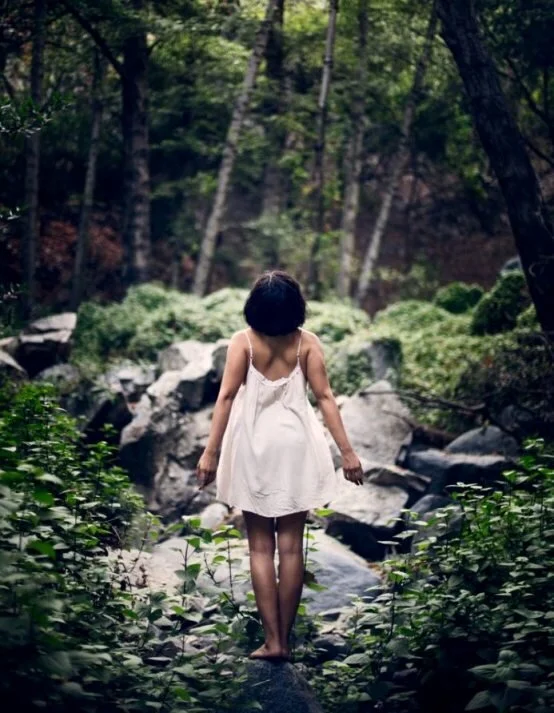Summer Sun
Summer’s arrived and we’re so ready to soak up that glorious summer sun. Staying home and hitting the garden is now a national pastime, so it’s pretty important to stay safe while having fun in the sun this summer.
le sun tan
Tanning became chic when Coco Chanel accidentally caught too much sun on a cruise in Cannes in the 1920s - or so the story goes. Before this having a tan was deeply unfashionable. Ladies went to unfathomable lengths applying lead based products and carrying parasols to stay chalky white.
But by the 1960s air travel was happening and the glamour of holidaying in the Mediterranean was irresistible. The main focus of the holiday to return with a deep tan with which to wow the neighbours.
Tanning got seriously fashionable - self-tanning products, around since the 1950s, were thrown around in abandon and then sunbeds were thrust upon us in the late 70s to keep us fully bronzed. As much as we love the feel of sun on our skin, these days I think we’ll all take healthy skin over tanned any day of the week.
summer sun and health
Summer in the sun… BBQs, lazy hazy afternoons, getting green fingered in the garden - there are lots of benefits to getting outside in the summer sun. A daily dose of vitamin D strengthens bones, while sunlight improves sleep quality by resetting our circadian rhythm. Sunlight reduces blood pressure - mine drops as soon as I hit the garden with a glass of something fruity.
Sunlight also improves mood - when light enters the eye, it stimulates neurons in the hypothalamus, a mood influencing part of the brain. These nerve impulses travel to the pineal gland, which regulates serotonin, the feel-good hormone linked to mood, the natural light boosting our mood and giving us all the good vibes.
how to stay safe in the sun
seeking shade - Tony Ross
Staying safe in the sun is essential to avoid sun damage and skin cancer (not to mention skin ageing). Sunburn increases the risk of skin cancer and skin cancer is the most common form of cancer in the UK. It’s on the rise again and 100,000 new cases are now diagnosed each year, while 9 in 10 cases of melanoma could have been prevented by enjoying the sun safely.
The sun’s UV rays are the strongest between 11am and 4pm from early April to late September. This is the time where the sun can cause damage, so we need to show it some respect.
One of the best ways to protect your skin from the sun's rays is to spend some time in the shade. Shade and clothing are more effective than sunscreen and more natural and eco friendly to boot. Take a break under trees, parasols, canopies or our personal fave - head indoors for a lazy long luncheon.
Rays reflect off pavements and burn through sheer fabrics, so choose loose-fitting pieces with a close weave material. If you can see through, UV radiation can penetrate the fabric and reach your skin. Unbleached cotton contains natural agents that absorb UV. Hats are your friend - I don’t leave home without my trusty cap.
SCREEN YOUR SKIN
Morgan Alley
Too much sun causes sunburn and can trigger early signs of ageing - the wrinkles, pigmentation and sagging skin we all want to avoid - so sun care is a must. It’s time to take a fresh look at our sunscreen. Wearing formulas that protect from both UVA and UVB rays are crucial in protecting our skin and slowing down the ageing process.
It will also prevent skin issues such as rosacea, acne and eczema from flaring up. Whatever we put on our skin is absorbed into our skin, so it’s important to look at ingredients and go for more natural products that are kinder and show our skin some love.
It’s good to consider environmental credentials too when choosing a sunscreen. How ocean safe is it? Chemicals contained in suncreams are thought to be damaging to marine life and coral reefs alike.
Chemicals like oxybenzone and octinoxate can seep into the water, where they're being absorbed by corals, algae, sea urchins, fish and mammals. Look for sunscreens with natural mineral ingredients aka titanium oxide and zinc oxide.
Choose a broad spectrum, high protection SPF with UVA 4* or 5* protection. Pop it on half an hour before you go in the sun. Apply liberally and reapply every 2 hours. Don't leave it in the sun - it stops working when stored above 25°C . And yes, it has a shelf life - once expired it's not effective... so bin it and recycle that tube.
protect your peepers
It’s National Sunglasses Day on 27 June and keeping your eyes protected from the sun is essential in summer. Exposure to the sun’s ultraviolet light and UV radiation is linked to some serious eye conditions... cataracts, macular degeneration, photokeratitis (corneal sunburn) and research has found that 5-10% of skin cancers occur on the eyelid… eek!
Protect your peepers by investing in quality sunglasses that filter out both UVA and UVB radiation. Over 90% of UV light can pass through even light cloud - so don't leave home without them.
It's not the colour of your lenses, it's the percentage of UV protection that matters, so you can go for that dreamy pale tint as long as you go for 100% UV protection. Oversized or wraparound sunglasses block the most sun, especially when those rays are bouncing off pavements and pools.
UV damage is cumulative, occurring over a lifetime of exposure. Children are especially vulnerable, so get them in good habits of throwing on their sunnies when you do and stay sun safe this summer.
Check out our range of 100% UV protected sunnies or customise your own adding in tints and graduations from our frame only range.
Get ready to turn up the heat.
Jo







